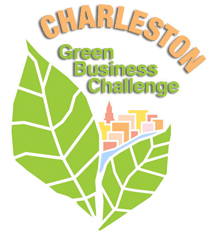As Part of the CharlestonWISE Impact Project, this historic Charleston home built around 1880 received an energy retrofit. The CharlestonWISE Impact Project is a partnership program between the City of Charleston and The Sustainability Institute (SI), and funded through a grant from the Sustainable Cities Institute. The Project provided valuable support for the growth and development of the CharlestonWISE program through data collection, community outreach, market analysis and workforce development. I helped to complete the project as one of my first responsibilities at SI. During 2011 and 2012 the Project performed 152 home energy assessments and 17 home energy retrofits on homes throughout the City of Charleston. These assessments provided much needed information on how our homes use energy and how we can better help all Charleston residents reduce their energy use and have healthy, comfortable, energy-efficient homes. 17 out of the 152 homes that received energy assessments also were chosen to receive various levels of energy retrofits. More on the Impact Project here.
For the pdf click on CWIP Case Study 1
This home received a comprehensive energy assessment by a qualified energy advocate. This assessment modeled energy improvements and recommended a scope of work specific to the house. Subsequently, the home received an energy retrofit with projections of 55% improvement in energy savings. We will revisit this home a year later to reanalyze the data and projections. Improving an existing home is more sustainable then building a new one. Improving a home that is historic helps to ensure that these treasures stay around for many more years to come. The Southeastern climate presents some unique challenges due to its warmth and humidity. If not done properly, irreversible damage can be dome to historic homes when a retrofit takes place. That’s why we worked hard to deliver a curriculum for contractors, energy auditors and historic preservation professionals that focused on improving energy efficiency while maintaining historic integrity. By replacing an aging improperly sized heating & air conditioning system in this home with mini splits and ductless units, we able to utilize new technology and minimize impact to the home. By encapsulating the attic area with open cell spray foam in a removable manner, we improved the building envelope while preserving the historical integrity of the structure.
Another retrofit conducted as part of this Project can be found here.
Update 4/29/13: More on the Impact Project here.

























































